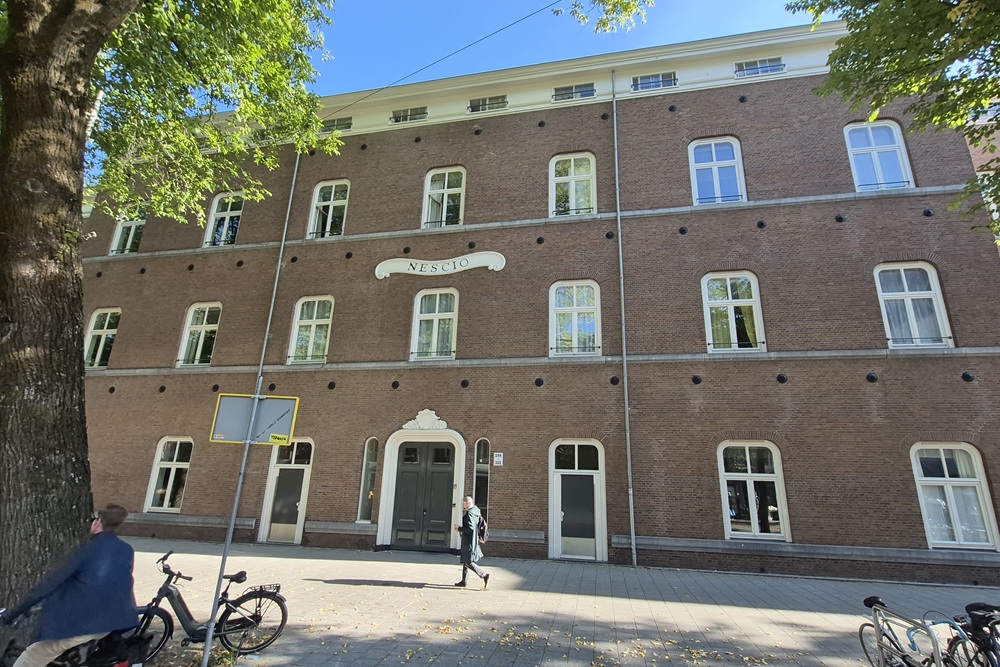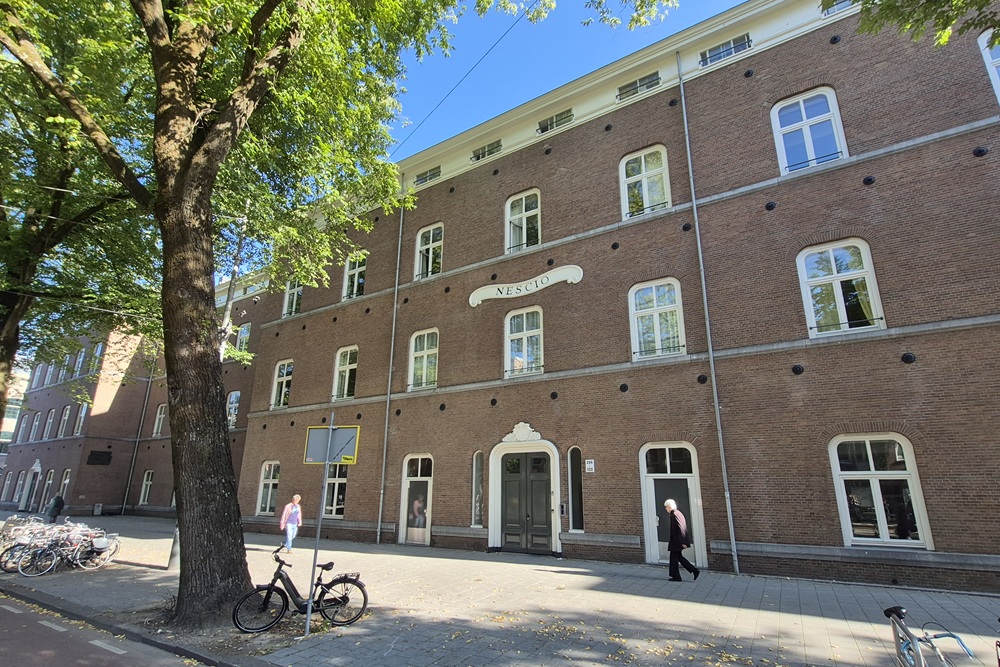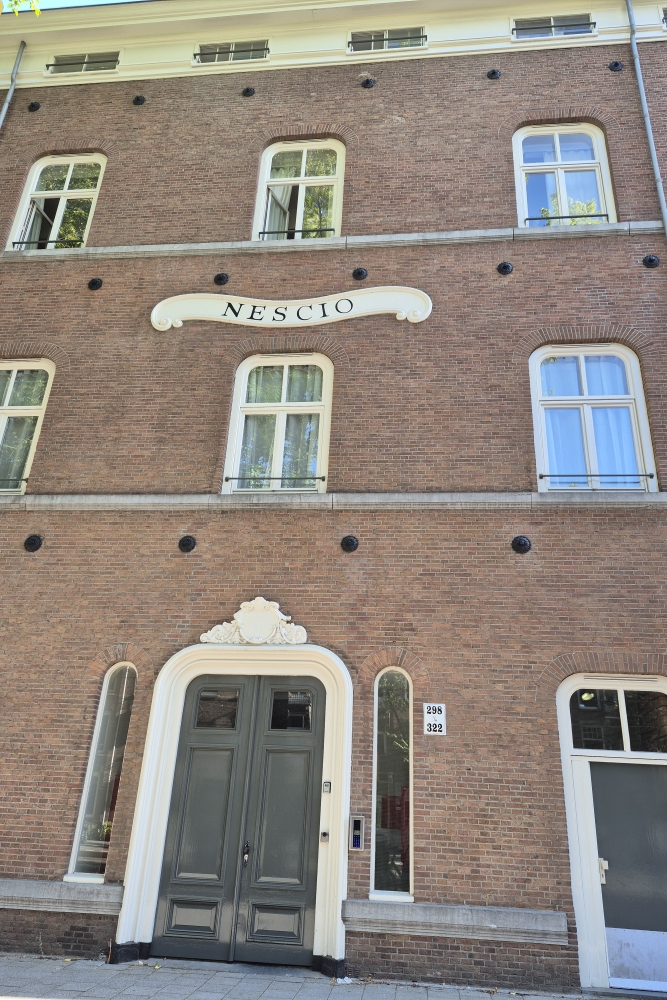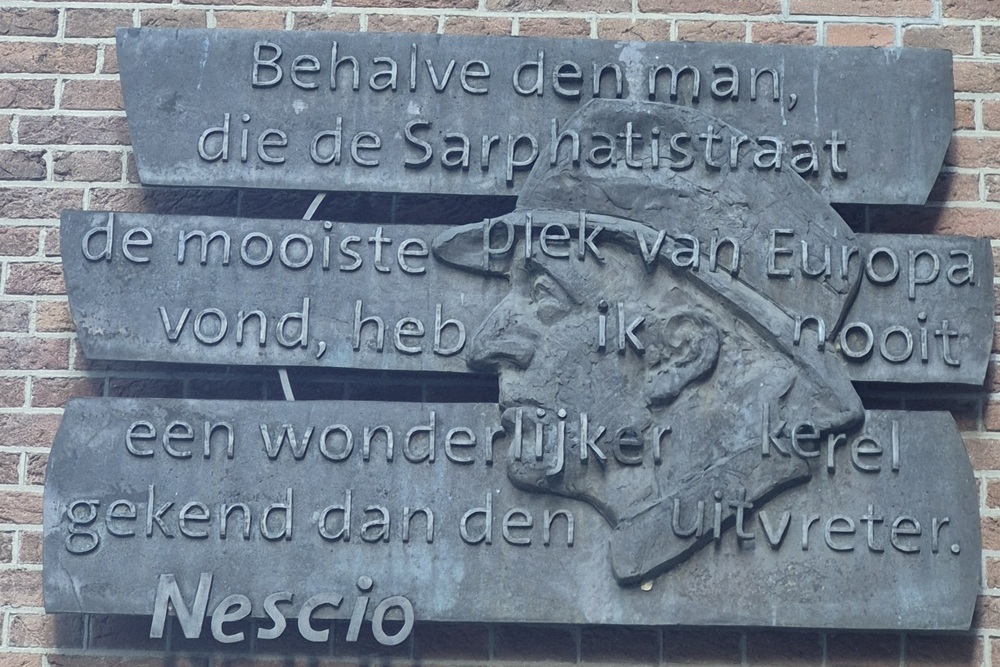Stelling van Amsterdam - National Military Hospital
he National Military Hospital on Sarphatistraat was built between 1868 and 1870 on the former Diemen stronghold, commissioned by the Ministry of War. The design, probably by Colonel D.G. Andreae, followed the so-called corridor system: long corridors with repeating window axes, austere neoclassical architecture, and an E-shaped floor plan. The building housed 275 patients, expandable to 400 via the attics. In 1919, Colonel D.R. Romeijn was in charge of the hospital.
Initially, the hospital had a separate anatomy building with an amphitheater, anatomical cabinet, and museum. This was later replaced by, among other things, a pavilion for infectious diseases. Soldiers were accommodated in large wards; officers were given separate rooms. The location was controversial at the time: near a cemetery, railway line, and factories, which critics felt detracted from the function and image of a national hospital.
During the First World War, although the Netherlands remained neutral, the hospital played a vital role in the medical care of mobilized soldiers within the Defence Line of Amsterdam. Applications for breadwinners' allowances from families of conscripts were also processed here. The hospital served as a central point for medical care at a time when thousands of soldiers were kept on alert.
After the war, Amsterdam lost its garrison status, leaving parts of the building vacant. In 1929, the Netherlands Cancer Institute and the Antoni van Leeuwenhoek House were established here, remaining active at this location until the late 1970s.
After the Second World War, the building was gradually repurposed: first for public health research, later for university institutions, and finally—in the late 1980s—converted into residential complexes, including youth housing.
Today, only the monumental facade recalls its military origins. The banner above the entrance, once bearing the inscription "Military Hospital," now bears the name "Nescio" – a nod to the writer who disputed the beauty of Sarphatistraat.
Do you have more information about this location? Inform us!
Source
- Text: TracesofWar
- Photos: Rick Hoogervorst
- stelling-amsterdam.nl
Nearby
Museum
- Memorial Centre Hollandsche Schouwburg Amsterdam - Amsterdam
- National Holocaustmuseum - Amsterdam
- Resistance-museum Amsterdam - Amsterdam
Point of interest
- Stelling van Amsterdam - National Clothing Warehouse - Amsterdam
- Amstellyceum Mauritskade - Amsterdam
- Stelling van Amsterdam - National Warehouse of Medicines - Amsterdam
Monument
- Memorial 'Liro' - Amsterdam
- Halverstad bridge - Amsterdam
- Memorial "43 Children" Amsterdam - Amsterdam
Cemetery
- De Nieuwe Kerk - Amsterdam
- Dutch War Graves New Eastern Cemetery Amsterdam - Amsterdam
- Polish War Graves New Eastern Cemetery Amsterdam - Amsterdam
Remembrance Stone
- Stumbling Stone Sarphatistraat 171-l - Amsterdam
- Stumbling Stones Sarphatistraat 175 - Amsterdam
- Stumbling Stones Sarphatistraat 177 - Amsterdam
Fortification
- Stelling van Amsterdam - Willem III-sluis - Amsterdam
- Stelling van Amsterdam - Willem I-sluis - Amsterdam
- Marinevliegkamp Schellingwoude (Seefliegerhorst Schellingwoude) - Shelter - Amsterdam







